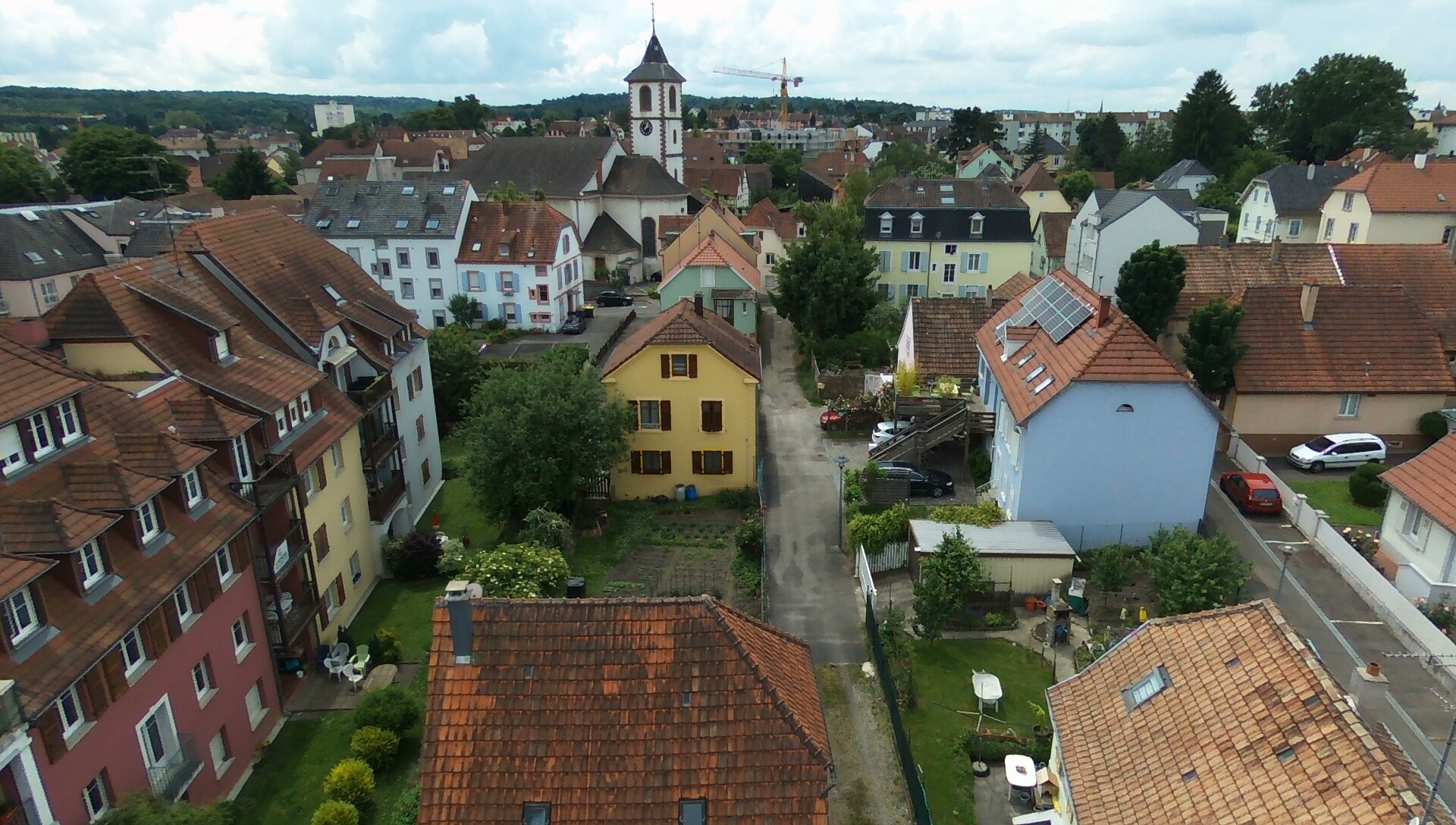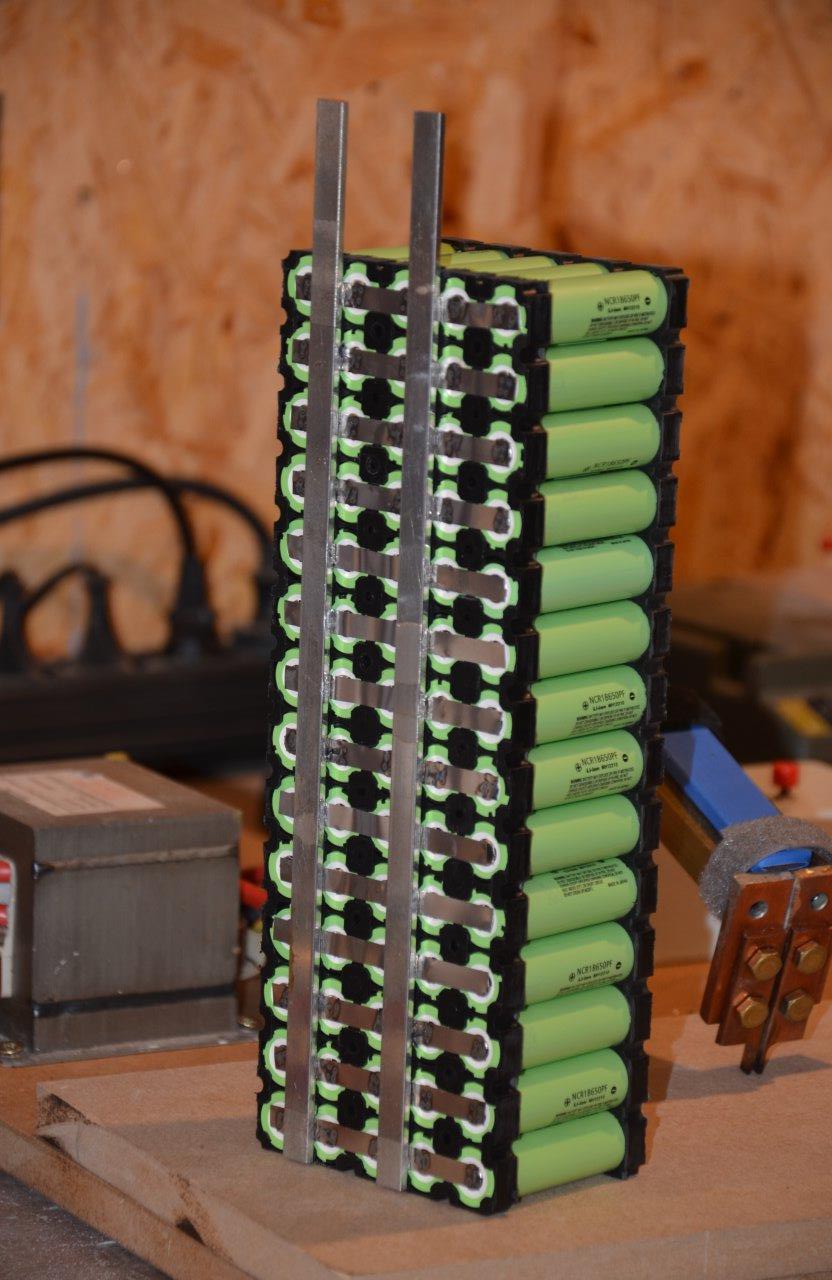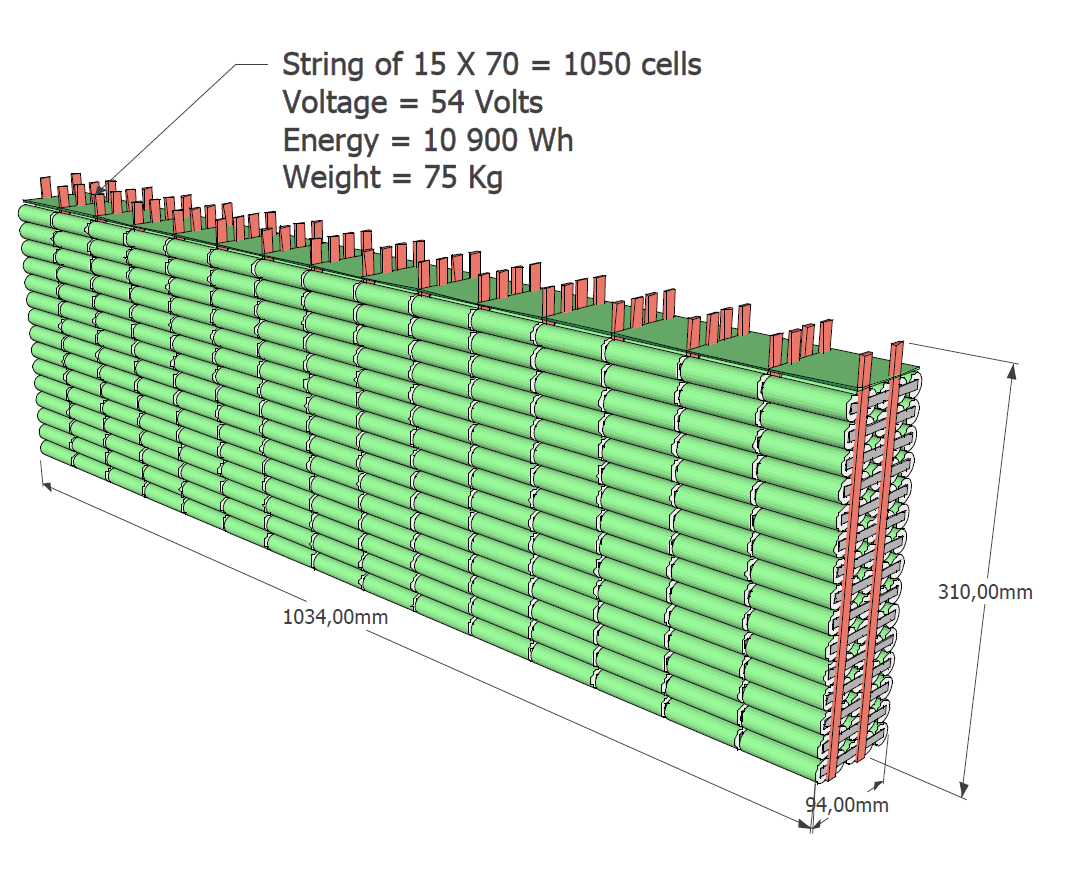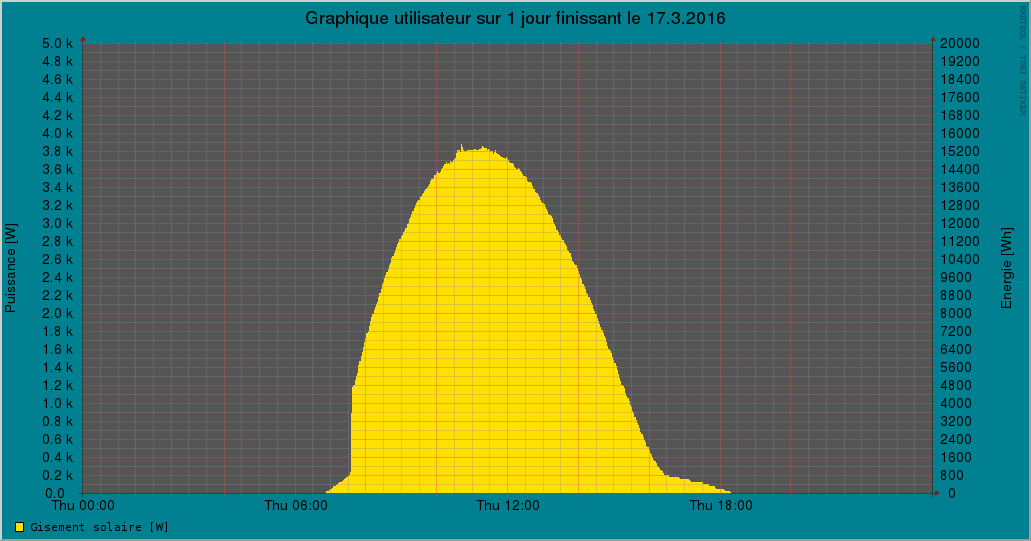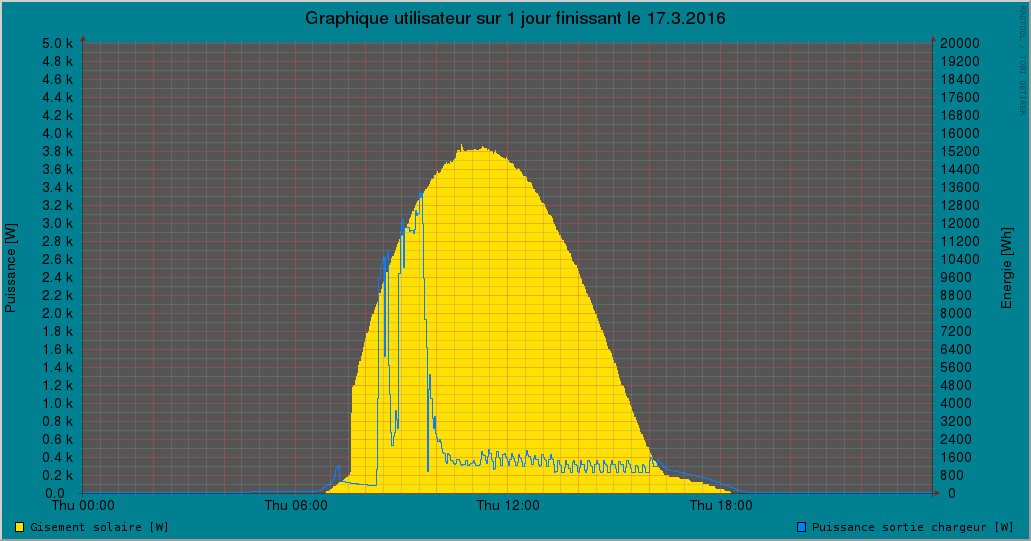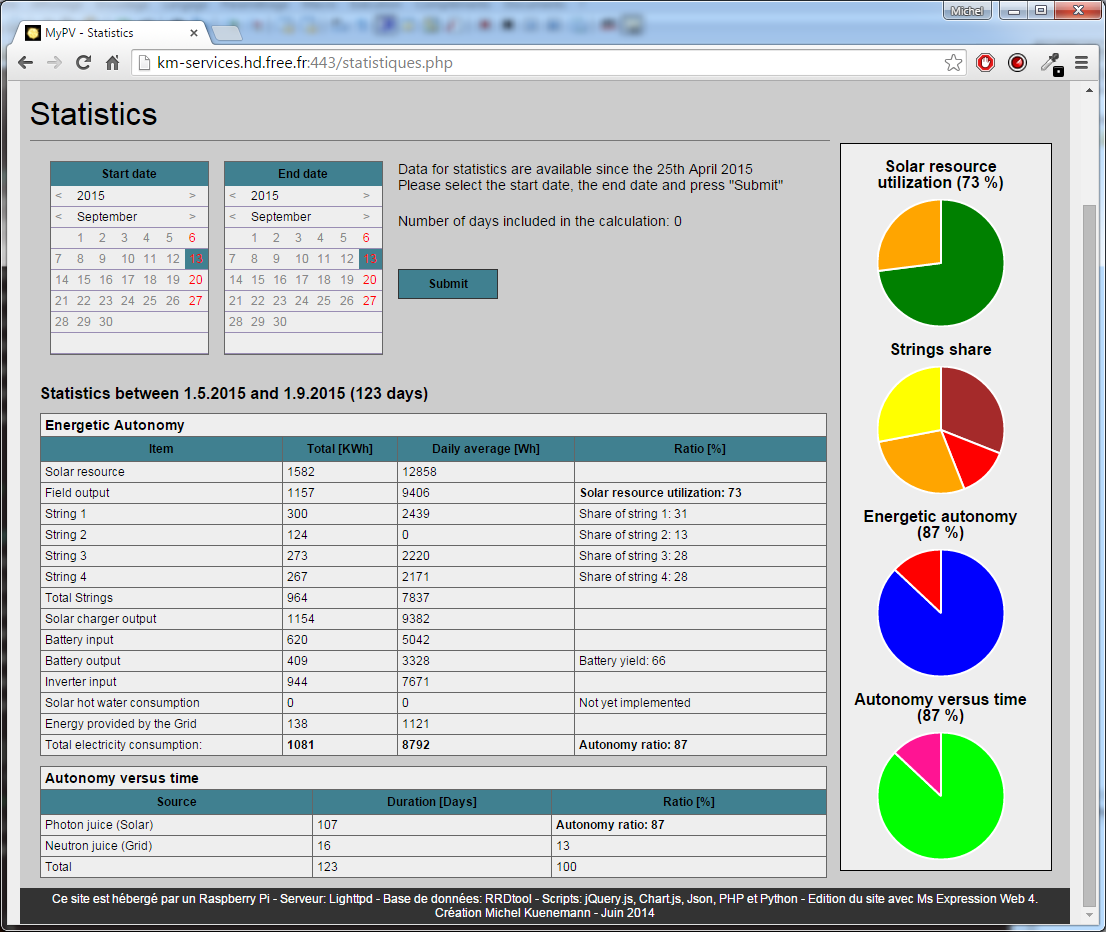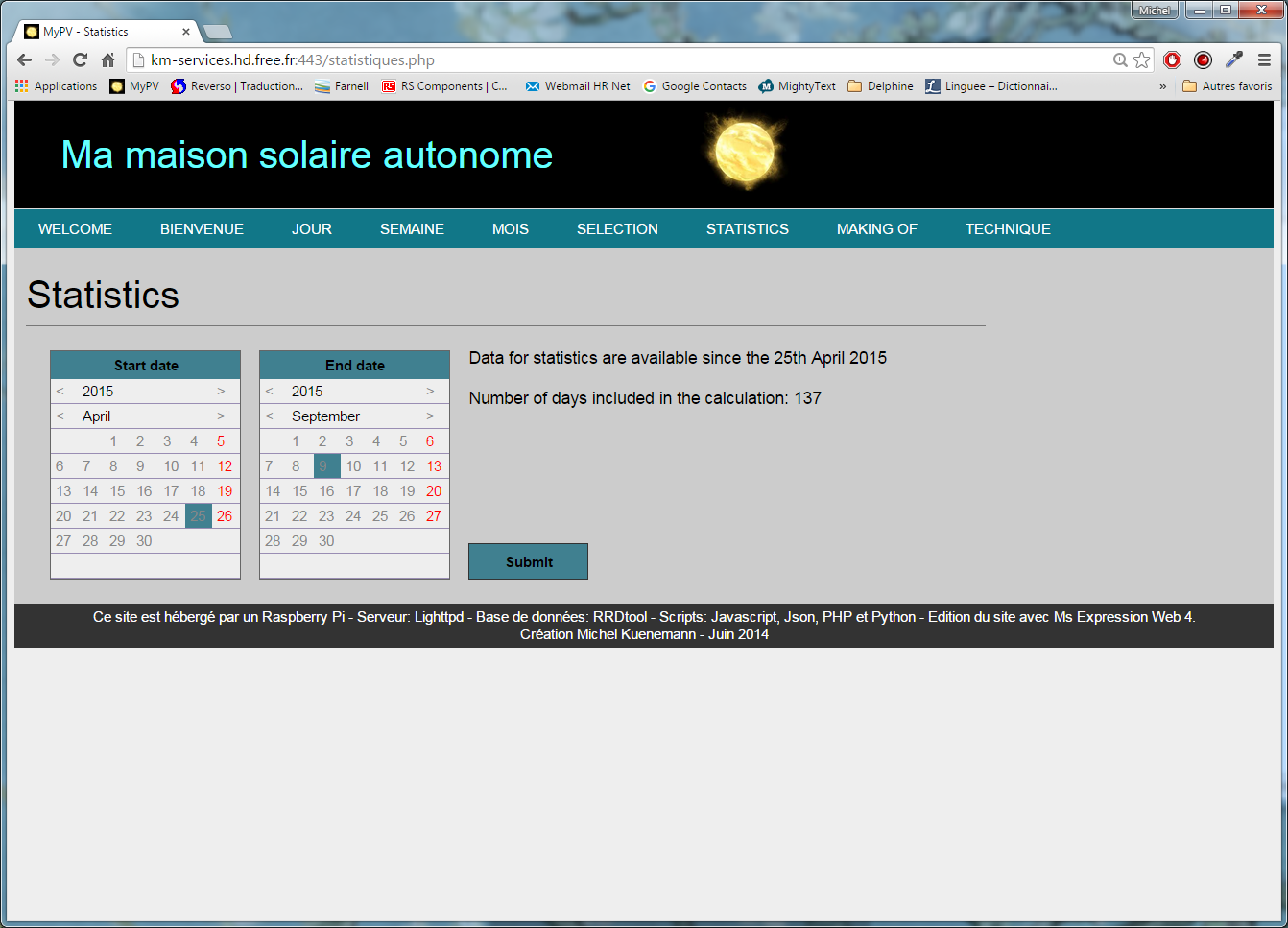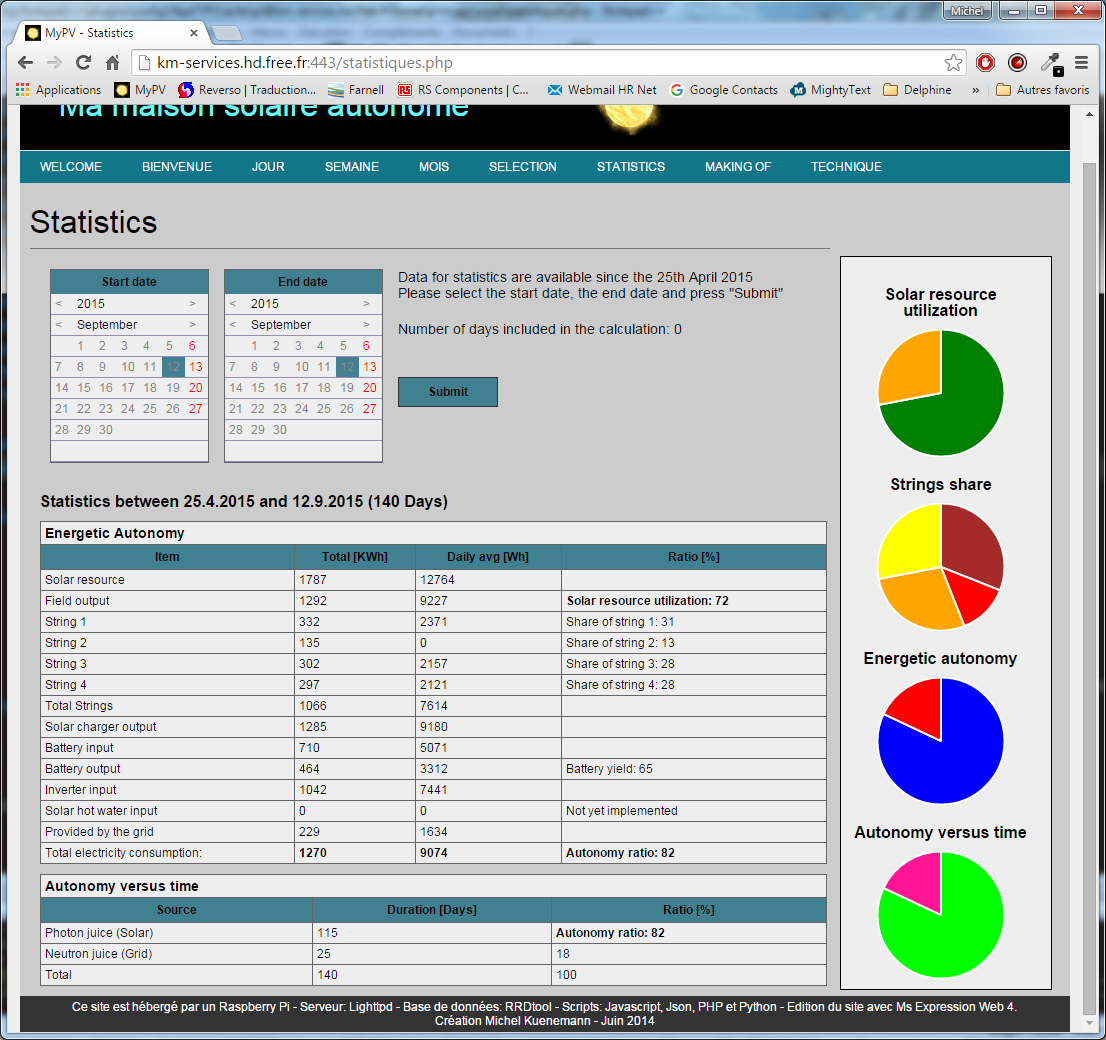-
First Lithium Battery Stack power On
11/27/2016 at 14:29 • 0 commentsThe first 10 kWh string is finished and installed in the bucket. First power on occured yesterday november 26th at 9 AM.
Everything works fine and I am waiting for some sun to fill up the batteries and start cycling.
The batteries are currently at around 50 % state of charge.
Check out the project here
-
The lead-acid batteries have been removed
09/28/2016 at 19:34 • 0 commentsTonight I have removed the 8 bulky lead-acid batteries - follow the story here
-
Aerial View
09/14/2016 at 12:51 • 0 commentsMy neighbour shot this cool view with his drone in june 2016.
My house is the blue one on the right side. The photo is taken roughly towards the South.
![]()
-
New Lithium Ion battery pack in progress
08/28/2016 at 21:45 • 0 commentsI have purchased all the necessary stuff to build a brand new 10 kWh Li ion battery pack to replace my dead and bulky Lead Acid batteries.
![]()
![]()
Check this new project out here.
-
The sun is back
03/21/2016 at 05:03 • 0 commentsOn March, 17th we had a perfectly sunny day :
![]()
Only a small part of the available energy was used (the blue curve indicates used power):
![]()
The blue curve indicates the power used by the house. After 10:30 AM the batteries were fully charged. The small fluctuations of the blue curve are probably due to the fridge compressor switching on and off.
-
Lead/acid to lithium battery changeover
02/27/2016 at 07:00 • 0 commentsThe lead/acid batteries of my system wear out much faster than expected. I really want to get rid of them now and switch to a more efficient technology. I have decided to build a Lithium/Ion battery pack made of 1000 or more 18650 cells. This type of cells is used in Tesla cars and Tesla's Powerwall.
These cells have a 3.7 Volts nominal voltage and have a typical capacity of 2000 mAH. One cell weighs about 43 grams.
The maximum capacity for these cells is near to 3000 mAH (high end Panasonic). By the way, Cells announced for much more than 3500 mAH (current maximal available capacity) are FAKES.
They cost between 0.5 € (used cells bought en Ebay) to several € for high end Panasonic cells.
A 1000 cell pack would have following characteristics:
- Energy: 3.7 * 2 * 1000 = 7400 WH = 7.4 KWH
- Weight: 50 * 1000 = 50 000 g = 50 Kg
- Cost (2 € unit cost): 1000 * 2 = 2000 €
- Life expectancy: 5 years
For comparison my current lead/acid pack has following data:
- Energy: 6 KWH (max)
- Weight: 60 * 8 = 480 Kg
- Cost 8 * 200 = 1600 €
- Life expectancy: 2 years - :-(
If I can get healthy cells for a unit cost of 2 € or less, it is really worth the effort.
My plan is to evaluate first the technology with a "mockup" made of about 100 used cells.
For this I build a test rig in order to check rapidly the health of each battery. I will also design a monitoring board capable of measuring the voltage and temperature of each group of cells. The BMS boards will send these data over isolated CAN buses or BlueTooth to the global system.
See my 110 kWh Powerbucket project.
-
One year of Solar potential movie
12/20/2015 at 13:58 • 0 commentsThe amount of energy that can be harvested changes every day. This timelapse movie shows the daily potential between April 25th 2015 and April 24th 2016 (365 days).
To create this movie, I have written a python script that loops through the period of time that I target. during each iteration, I ask rrdtool graph to create a png file containing the solar potential data relative to the current day. This script was executed by the Raspberry Pi hosting the rrdtools data base and the website.
Once the 365 png files created I transfered them into Movie Maker on my Windows PC and I created the timelapse movie in a few minutes.
-
Summer 2015 - Production review
09/13/2015 at 08:48 • 0 commentsProduction review between May, 1st 2015 and September, 1st 2015 (4 months)
The "MyPV" database collects detailed energetic informations since end of April 2015. Thanks to the new STATISTICS page of MyPV website, it takes now 3 clicks and 2 seconds to get the numbers. Try yourself :-)
I performed the calculations on the May to August period (4 months), and that's the result:
![]()
A few comments:
- The solar resource utilization ratio of 73 % is a very good figure. In fact the solar resource measurement is a bit pessimistic (indicates less than the reality by more than 10 %). I think that the real resource utilization ratio is rather near 60 %. So still 40% of the available solar energy is not used by the system. The solar power measurement precision will be improved soon.
- The 4 panels strings should provide approximately 25 % each. One can see that the part provided by String 2 is very low - only 13 % of the total amount of energy. One could think that String 2 has a failure. On the other hand the total strings output (964 KWh) is much less than field output (1157 Kwh). This indicates that the problem is probably due a faulty current sensor on String 2. This has to be fixed ASAP .
- The battery yield of 66 % is a rather low figure. This can be explained by the fact that the battery stays many hours each day in "absorbtion" and "floating" status. The energy put in the battery during these phases is almost completely lost.
- The solar hot water consumption figure is not currently computed. This field is a provision for when my Photovoltaic Hot Water Production project is finished. Thanks to this device, the solar resource utilization ratio should raise a lot in the future.
- The energetic autonomy ratio of 87 % is very good. The summer was really great this year and the system was on-line all the time. Note: the energetic autonomy ratio is computed with the inverter input figure and not computed with the field output figure. In this case the energetic autonomy ratio would be even larger, but not realistic.
- The average daily consumption (8.8 KWh) is in line with the assumptions I made when I designed the system (10 KWh). In winter the average daily consumption will be closer to 10 KWh.
- The autonomy versus time ratio of 87 % is completely in line with the energetic autonomy ratio. That means that our consumption is nearly the same every day.
-
New statistics page on "MyPV" website
09/09/2015 at 02:56 • 0 commentsI have (at last) finished the statistics page of the "MyPV" website. This page is in english, you lucky guys :-).
If you click the STATISTICS menu button, you'll get this:
![]()
Select then a start date (posterior to April, 25th 2015) and an end date.
If you click the Submit button, you'll get this kind of screen:
![]()
The Raspberry Pi hosting the site computes for you quite a lot of interesting figures regarding the system. You will see that the output page is obtained rather quickly. Furthermore the amount of calculation is always the same and does not depend of the amount of days taken into account in the statistics.
I hope that the page is self explaining. If you have remarks or questions, do not hesitate to ask me for clarifications.
A few words about the techniques and tools used to build this page
The page itself was edited with MS Expression Web 4 (a free and rather cool tool from Microsoft).
The calendars are managed thanks to a piece of Javascript. I was inspired by this german Guy's site.
When the user cliks "submit" the start date and the end date are posted to the server which executes the php code included in the page.
The php program launches several "rrdtool fetch" commands to retrieve the relevant data from the Round Robin databases. The results of these queries a stored in regular text files.
The php code parses the content of the text files and performs all the calculations. The results are "echoed" into a new html page which can then be displayed by your browser.
The charts are created with Chart.js and jQuery.js
The styles are managed in a separate css file.
-
How much did all this stuff cost ?
08/15/2015 at 17:25 • 0 commentsItem Brand / Type Qty Unit price (€) Total price ( €) Pannels Yingli Panda YL270-30B 16 247.- 3 952.- Rails K2 1 Set 1 253.- 1 253.- Charger Victron MPPT 150/70 1 689.- 689.- Inverter Victron Phoenix 48/5000 1 3 041.- 3 041.- Batteries Vipiemme 12V / 230 AH B269C 8 253.- 2 024.- Misc. Electrical wires, fuses and cabinet 1 Set 1 200.- 1 200.- DIY Electronics Irradiance panel and controller 1 90.- 90.- DIYElectronics Solar field manager + Raspberry Pi 1 200.- 200.- DIY Electronics Battery Manager 1 120.- 120.- DIY Electronics On Line Source Selector 1 200.- 200.- Total (€) 12 769.-
My Off-grid Solar System Monitoring
How I did to remotely control and monitor my home made Off-grid Photo voltaic System
 Michel Kuenemann
Michel Kuenemann